How and how to feed cauliflower in the open field
Cauliflower is a capricious vegetable, picky about loosening, weeding, watering, fertilizing cabbage after planting. If you dry out the soil a little, the plant will slow down its growth and will delay maturation. For the ripening of this vegetable, regular feeding is important at all stages of plant development, starting with soil preparation in the autumn, planting seedlings and ending with the ripening of the head of cabbage. Boron, molybdenum and other trace elements are necessary for a growing vegetable, care will give excellent and healthy heads of cauliflower.
This vegetable is used both raw and stewed, boiled. Small children at the age of 6 months make mashed potatoes from this healthy product. It is perfectly absorbed by the body and provides nutrients and vitamins.
When and how to fertilize the soil, how to grow and look after cauliflower you will find out now.
How to feed the soil before planting
Before planting this whimsical culture, you need to prepare the soil while preparing the land for wintering. To do this, when plowing the field, fertilizers are introduced into the soil in the form of compost or burned-out manure. This will give rise to a rich harvest. The use of top dressing is carried out both by folk remedies and by proven chemical elements, and cabbage is also fed with boric acid.
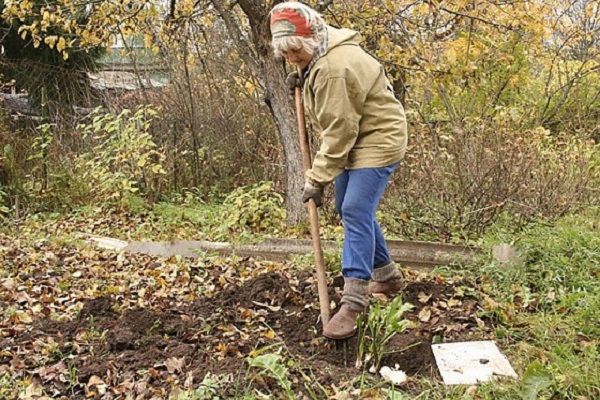
How many times does a crop need to be processed?
- In the spring before planting at the main growing site.
- Top dressing should be applied to the seedling ground 10 days after the pick.
- When 4 leaves are formed.
- The first feeding of the main bush 2 weeks after planting in the ground.
- Second feeding 10 days after the first.
- The third during the formation of the ovary.
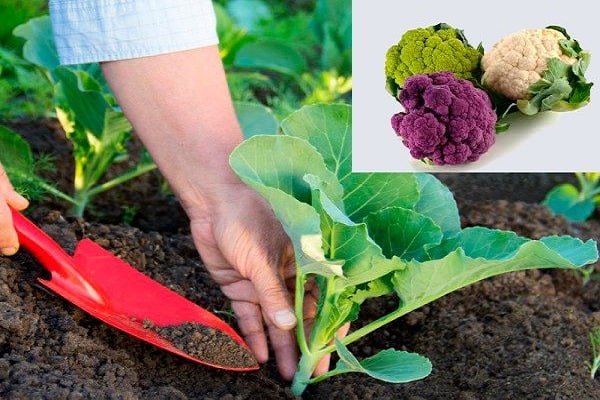
Thus, cauliflower is fed in the open field up to 4 times during the cultivation of one crop. During growth, it is important to loosen and weed the ground, during formation to protect them from the scorching sun rays, for this they use their own leaves - they are broken and tied around the growing heads of cabbage. It is necessary to keep the soil moist. The use of hilling will protect vegetables from diseases. Cauliflower will grow healthy with these manipulations.
Germination of seedlings
Cauliflower is grown in two ways. Directly sowing seeds to a permanent growing place, but most gardeners grow seedlings before planting in the garden. This manipulation allows you to remove the fruits earlier, and the gradual planting of seedlings allows the vegetables to ripen throughout the summer and autumn period. How is seedling growing?
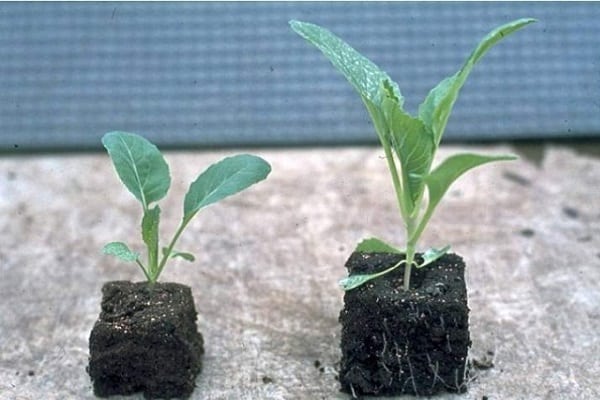
Seeds for seedlings are planted from March to the end of May. Before germination, prepare as follows.
- A week before planting, calibration takes place - processing in 3% saline solution.
- Rinsing with water.
- Drying.
- 12 hours soaking seeds in a solution of wood ash (add 1 tablespoon per liter of water).
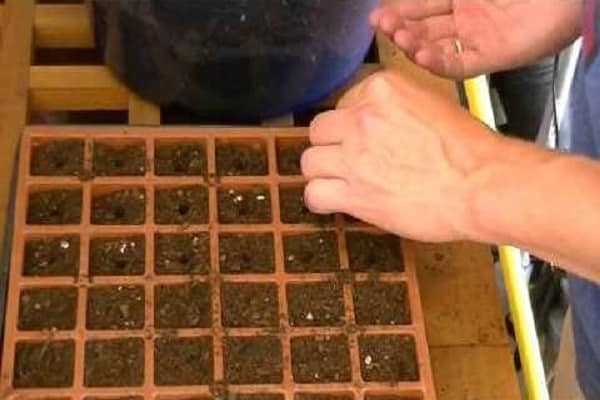
They sit in the soil to a depth of 1 centimeter and maintain a distance between them of 2-3 centimeters. Cover with a film or mulch, watered as the earth dries up with water at room temperature.
10 days after planting seeds for seedlings, the first feeding is carried out in the form of a solution of urea, superphosphate and potassium chloride in a ratio of 20:40:10 grams per 10 liters of water. After another 10 days, the following fertilizer is applied: dissolve 30 grams of urea and 20 grams of potassium per 10 liters of water. And the third time they feed the seedlings when 4 cabbage leaves are formed, for this, boric acid, manganese sulfate and acidic ammonium molybdenum are diluted in 10 liters of water in a ratio of 2: 1.5: 0.5 grams per bucket of water.
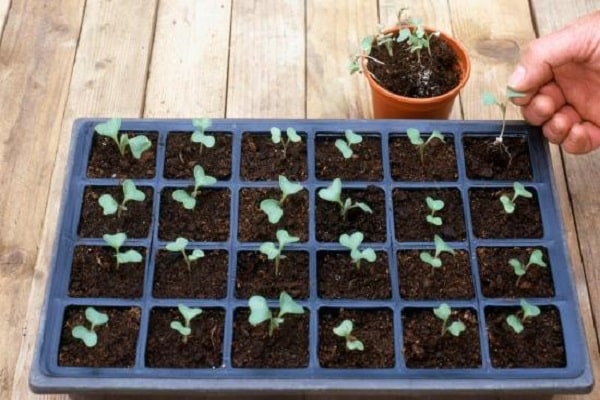
On the 45-51 day of seedling growth, it is planted in the ground. By this time, 4 to 6 permanent leaves should have formed on the bush.
Planting seedlings in the ground
Cauliflower is resistant to temperature extremes. A light-loving plant, but during the formation of the ovary it is necessary to shade from the scorching sun's rays, otherwise the vegetable will bloom ahead of time and the heads of cabbage will not form properly. Own leaves can provide protection from the sun, for this they are lifted up and tied around the head of cabbage.
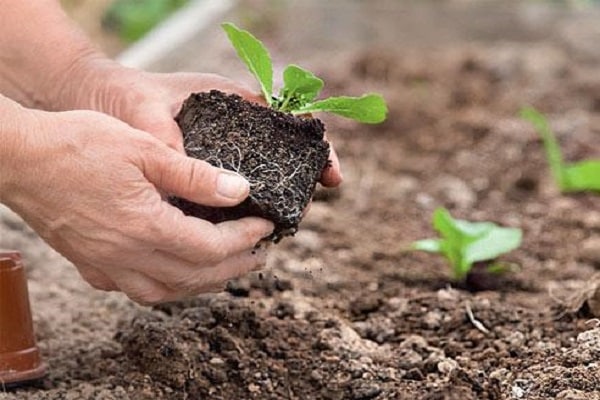
Seedlings are planted on a ridge in a checkerboard pattern, observing the distance between crops of 50 to 40 centimeters. Cuttings are planted in the hole, covering the entire stem with earth. Make sure that the top bud of the cabbage remains on the surface. If it is covered with earth, the bud will rot and the seedlings will die. During the main cultivation of the culture, 3 dressings are carried out. This is done so that the head of cabbage does not bloom ahead of time and all vitamins and minerals are preserved in it.
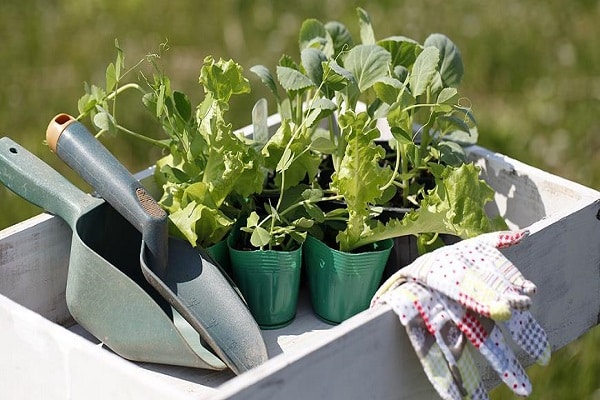
How to feed cauliflower
The first feeding after planting in the ground is carried out in 1.5-2 weeks. To do this, bred cow dung with rainwater in a 10 liter bucket. Let it brew for a week, and then take 07 liters of mullein and 1 tablespoon of mineral fertilizer per 10 liter bucket of water and water each bush.
The second feeding is carried out 10 days after the first solution of trace elements: 30 grams of ammonium nitrate, 2 grams of potassium chloride, boric acid - 2 grams and 40 grams of superphosphate are added to 10 liters of water. Top dressing is poured under each bush.

The third foliar dressing of cauliflower is carried out during the formation of the head of cabbage. Mullein is diluted with water in a ratio of 1: 8 per 10 liters of water, 30 grams of ammonium nitrate, 20 grams of calcium chloride and 30 grams of superphosphate are added.
During formation, watering of plants is increased, the soil is moistened to the entire depth of the root system.
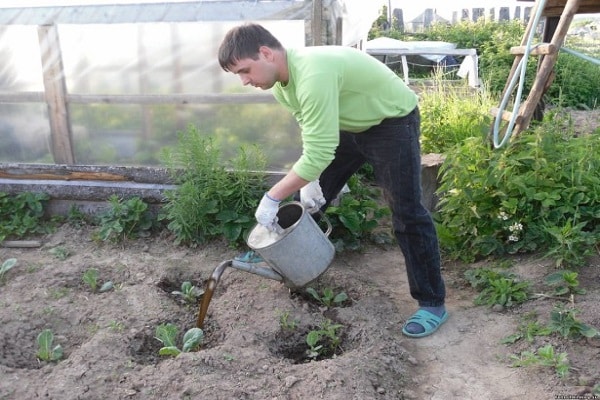
Many gardeners use regular baker's yeast as an effective plant fertilizer. Yeast diluted in water contributes to the effective development of the root system, gives the plants the vitamins necessary for growth. Fertilizer from yeast for cauliflower is prepared as follows: 1 part of yeast is diluted in 5 parts of warm water. Before use, the solution is once again diluted in 10 parts of water, after which the plants are watered.
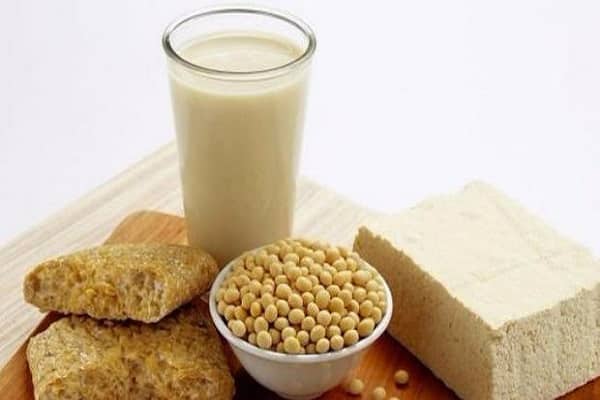
Plant care rules during growth
When the seedlings are already growing in the garden, you should adhere to the following rules for caring for it.
- Frequent watering.
- Hilling every 15 days.
- Shading of heads of cabbage.
- Top dressing for root.
- Fertilizing cabbage with boric acid.
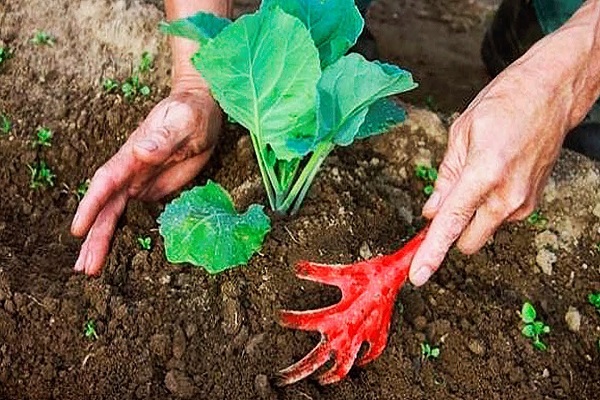
So, after each feeding, they huddle, filling the trunk with soil. This manipulation protects the roots from disease. The head of cabbage forms correctly under certain conditions. It is necessary to monitor the moisture content of the soil - from drying out, the cabbage will bloom earlier.
The air temperature should be within 20-22 degrees, otherwise the cauliflower will form incorrectly and will not have a presentation.
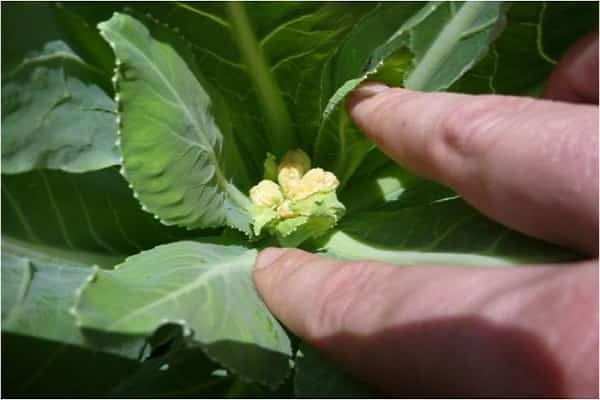
For enrichment with vitamins and microelements, you need to feed the cauliflower with the following solution - dissolve boron and molybdenum in water and spray.
In bad weather conditions - dry summers, acidic sandy soils, cold weather, plants experience molybdenum starvation, inflorescences die out, leaves are soft and ugly, the head of cabbage does not tie. To eliminate these shortcomings, foliar feeding is carried out, the use of a trace element is implied - ammonium molybdenum is dissolved with water and sprayed.
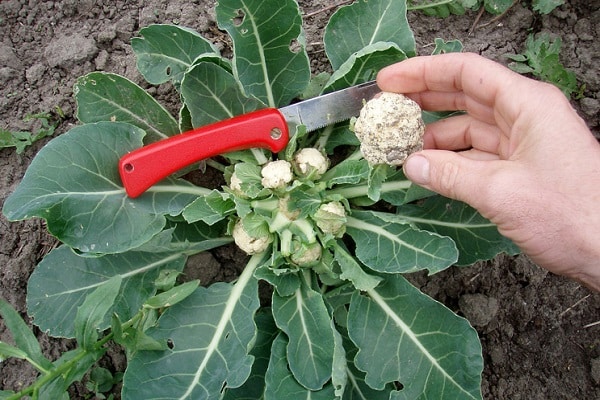
Harvesting
Removal heads are ready from the end of May. Heads of cabbage are cut as they form, preventing flowering. When the head of cabbage blooms, the nutrients of the cabbage are lost and all manipulations will go to waste. With proper crop care, harvesting takes about 2 weeks.
To get another harvest of cabbage per year - in July, after planting the second batch of seedlings, the harvest is removed at the end of August.
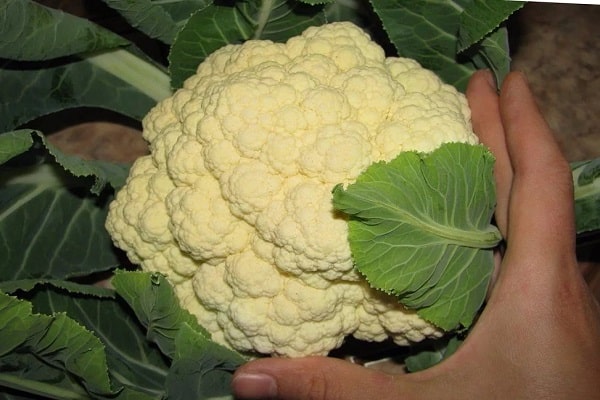
Varieties for the second harvest - Autumn, Round Head, Domestic, Broadleaf. Seedlings are planted in loose soil fertilized with mullein. The second harvest is harvested in late August - early September and ends in two weeks. In cool weather, large and dense heads of cabbage form.

Preparing the soil for the next season
In order for the cauliflower to grow fruitfully next year, you need to fertilize the soil with humus in the fall, then dig up the ground and leave to rest until spring. Thus, with proper care of cabbage, gardeners receive high-quality vegetables, useful vitamins and trace elements twice a season.
We learned how to fertilize and care for cauliflower.
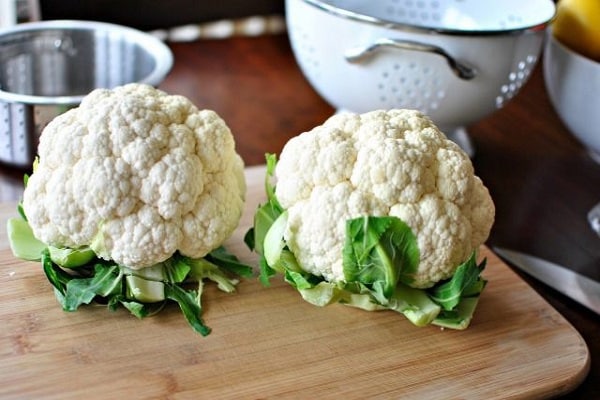
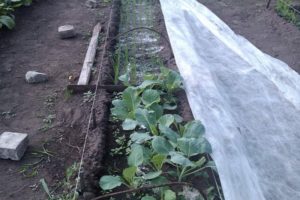
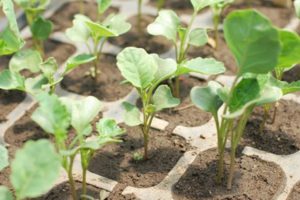



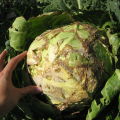
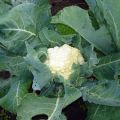

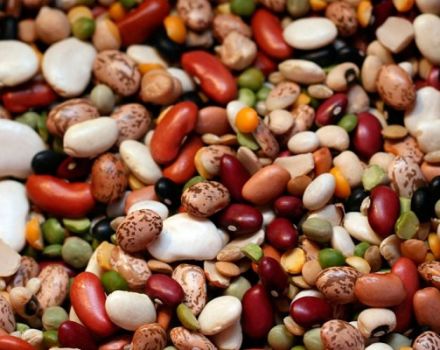

The best feed in my experience is bird droppings. You just need to use it very carefully - if the concentration in the solution is too high, then you can burn the seedlings. Also, in addition, I use the tool BioGrow - with it the heads of cabbage turn out to be larger.